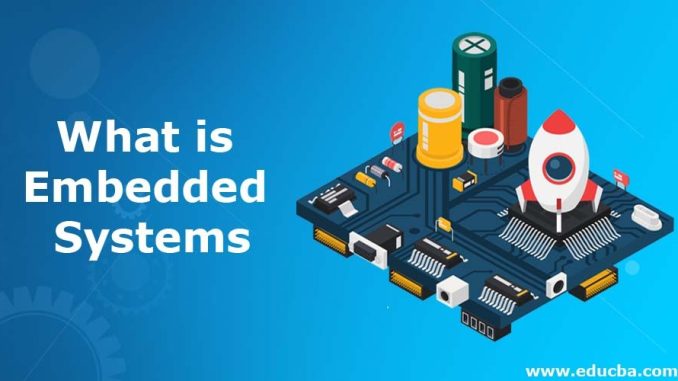
Embedded systems are the quiet workhorses of modern technology, operating behind the scenes to power everything from household appliances to industrial machinery. Unlike general-purpose computers, which are designed to perform a wide range of tasks, embedded systems are built for specific functions within larger devices. They consist of a combination of hardware and software, often with a microcontroller or microprocessor at the core, and are optimized for efficiency, reliability, and real-time performance. While they may not be visible to the average user, their presence is felt in nearly every aspect of daily life and business operations.
The defining characteristic of an embedded system is its integration into a larger system to perform dedicated tasks. For example, the control unit in a washing machine that manages water levels, spin cycles, and temperature settings is an embedded system. It doesn’t need to browse the internet or run spreadsheets—it simply needs to execute its programmed instructions consistently and accurately. This specialization allows embedded systems to be highly efficient, often consuming minimal power and requiring limited memory. In environments where space, cost, and energy consumption are critical considerations, such as medical devices or automotive components, these attributes are particularly valuable.
In the business world, embedded systems play a crucial role in automation and process control. Manufacturing plants rely on embedded systems to monitor assembly lines, regulate temperatures, and ensure safety protocols are followed. These systems are designed to operate continuously, often in harsh conditions, and must respond to inputs in real time. A delay of even a few milliseconds could disrupt production or compromise safety. As a result, embedded systems are engineered with a focus on reliability and deterministic behavior, ensuring that they perform their tasks without fail.
The rise of the Internet of Things has further elevated the importance of embedded systems. Connected devices, from smart thermostats to wearable fitness trackers, rely on embedded systems to collect data, process information, and communicate with other devices or cloud platforms. These systems enable real-time decision-making and remote control, transforming how businesses interact with their environments and customers. For instance, a logistics company might use embedded sensors in shipping containers to monitor temperature and humidity, ensuring that sensitive goods are transported under optimal conditions. The data collected can be analyzed to improve efficiency, reduce waste, and enhance customer satisfaction.
Embedded systems also play a pivotal role in sectors where precision and safety are paramount. In aerospace, embedded systems control navigation, flight stability, and communication. In healthcare, they power devices like pacemakers, infusion pumps, and diagnostic equipment. These applications demand rigorous testing and certification, as any malfunction could have serious consequences. Businesses operating in these domains must adhere to strict regulatory standards and invest in robust design and validation processes. The complexity of these systems often requires interdisciplinary collaboration, bringing together experts in hardware design, software engineering, and domain-specific knowledge.
From a strategic perspective, embedded systems offer opportunities for differentiation and innovation. Companies that design their own embedded solutions can tailor functionality to meet specific needs, optimize performance, and reduce dependency on third-party vendors. This control over the technology stack can lead to proprietary advantages and improved integration with other systems. For example, an automotive manufacturer might develop a custom embedded system for its electric vehicles, enabling unique features such as adaptive cruise control or energy-efficient battery management. These capabilities not only enhance the product but also reinforce the brand’s value proposition.
However, the development of embedded systems is not without challenges. Designing for constrained environments requires careful trade-offs between performance, cost, and complexity. Developers must consider factors such as processor speed, memory limitations, and power consumption, often working within tight margins. Security is another critical concern, especially as embedded systems become more connected. Vulnerabilities in firmware or communication protocols can expose devices to cyber threats, potentially compromising data or disrupting operations. Businesses must prioritize secure coding practices, regular updates, and robust encryption to mitigate these risks.
The lifecycle of embedded systems also differs from that of general-purpose computing devices. Many embedded systems are expected to operate for years, even decades, without failure. This longevity demands durable hardware and maintainable software, as well as strategies for updates and support. In industries like energy or transportation, where infrastructure investments are substantial, the reliability and sustainability of embedded systems are key considerations. Businesses must plan for long-term maintenance, compatibility with evolving standards, and the ability to adapt to changing requirements.
Ultimately, embedded systems represent a convergence of engineering precision and practical functionality. They are the invisible engines that drive innovation across industries, enabling smarter products, more efficient processes, and safer environments. For business leaders, understanding the role and potential of embedded systems is essential to making informed decisions about technology investments, product development, and operational strategy. As the digital landscape continues to evolve, embedded systems will remain at the heart of transformation, quietly shaping the future through their specialized, dependable, and intelligent design.